Landing your dream speech language pathologist (SLP) job starts with a powerful cover letter. A well-crafted cover letter is your first impression, a crucial opportunity to showcase your skills, experience, and passion for helping others. This guide reveals the secrets to writing an SLP cover letter that grabs attention, highlights your strengths, and gets you hired fast. We’ll cover everything from highlighting your skills to avoiding common mistakes, ensuring your application stands out from the crowd.
Highlighting Your SLP Skills and Experience
Your SLP cover letter is the perfect place to shine a spotlight on your skills and experience. It’s where you connect your qualifications to the specific job requirements. Start by creating a skills inventory, listing your areas of expertise, such as pediatric speech therapy, adult dysphagia, or aphasia rehabilitation. Then, use your cover letter to demonstrate how your abilities align with the position’s needs. Remember to tailor the letter to each job, emphasizing the skills most relevant to that role.
Tailoring Your Cover Letter to the Job
Generic cover letters rarely impress. Tailoring demonstrates your genuine interest and understanding of the role. This involves detailed research and careful analysis.
Researching the Clinic or Organization
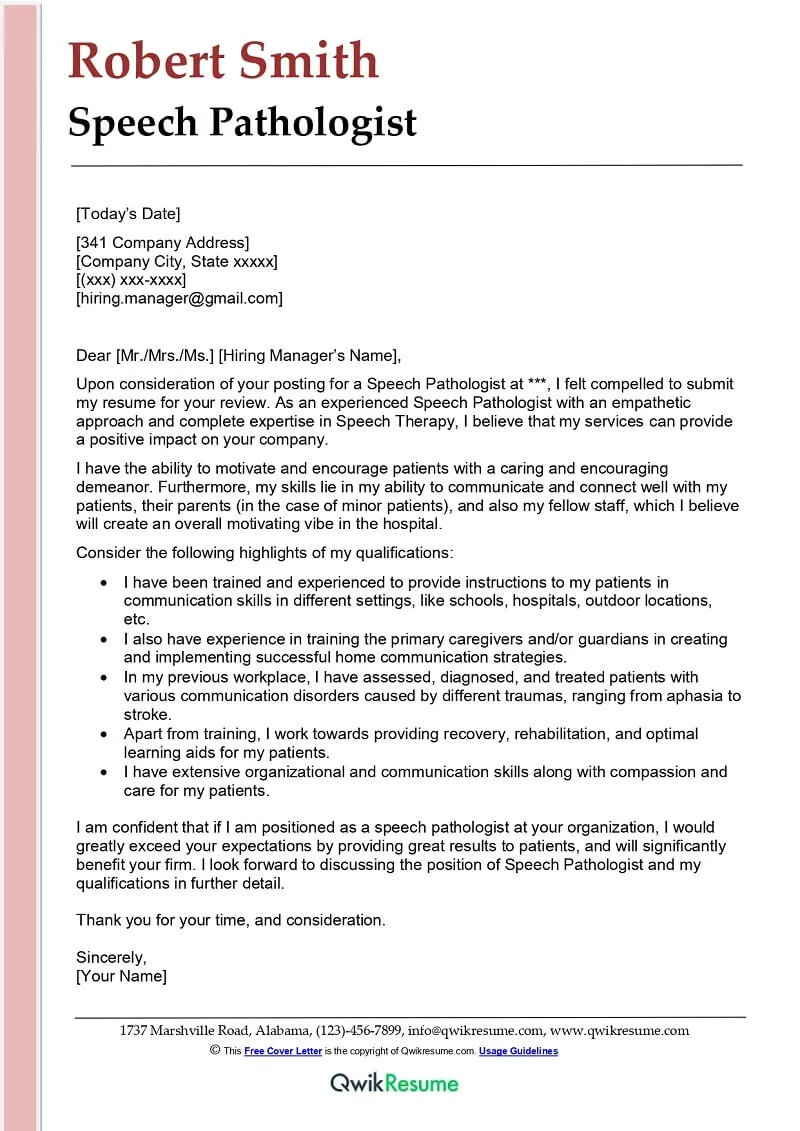
Before writing, research the employer thoroughly. Visit their website, read their mission statement, and explore their services. Understand their patient population, treatment approaches, and values. Mentioning specific details about the organization shows your commitment and attention to detail, which is crucial for any SLP.
Matching Skills with Job Requirements
Carefully review the job description, identifying the key requirements. Use the same language and terminology in your cover letter. If the job requires experience with specific assessments or populations, highlight your relevant skills and training. This targeted approach proves you are a well-suited candidate.
Showcasing Your Achievements
Don’t just list your responsibilities; showcase your achievements. Quantify your accomplishments whenever possible. Use data and statistics to demonstrate your impact.
Quantifying Your Impact
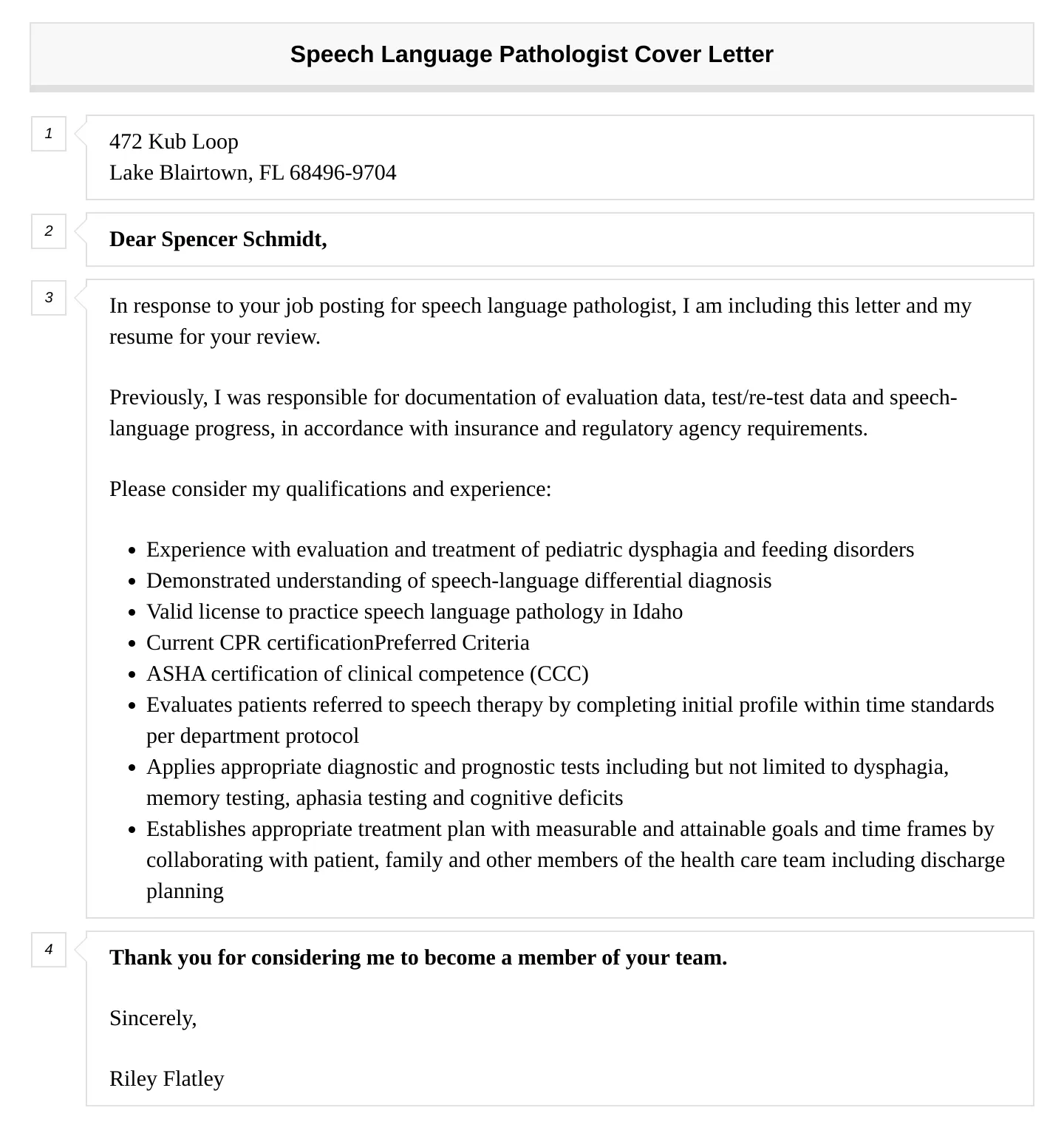
Instead of saying you ‘improved patient outcomes,’ state ‘Increased patient communication skills by 30% in six months.’ Quantifiable achievements provide concrete evidence of your skills and value to a potential employer. If you worked with a specific population or used a particular therapeutic technique, highlight your successes in those areas.
Using Action Verbs Effectively
Start your sentences with strong action verbs to describe your accomplishments. Examples include ‘developed,’ ‘implemented,’ ‘managed,’ ’trained,’ ‘assessed,’ and ‘coordinated.’ This language makes your cover letter more dynamic and engaging, making it easier for the hiring manager to see your value as an SLP.
Formatting and Presentation Tips
The appearance of your cover letter is as important as its content. A clean, professional format makes your letter easy to read and shows that you pay attention to detail.
Choosing the Right Font and Font Size
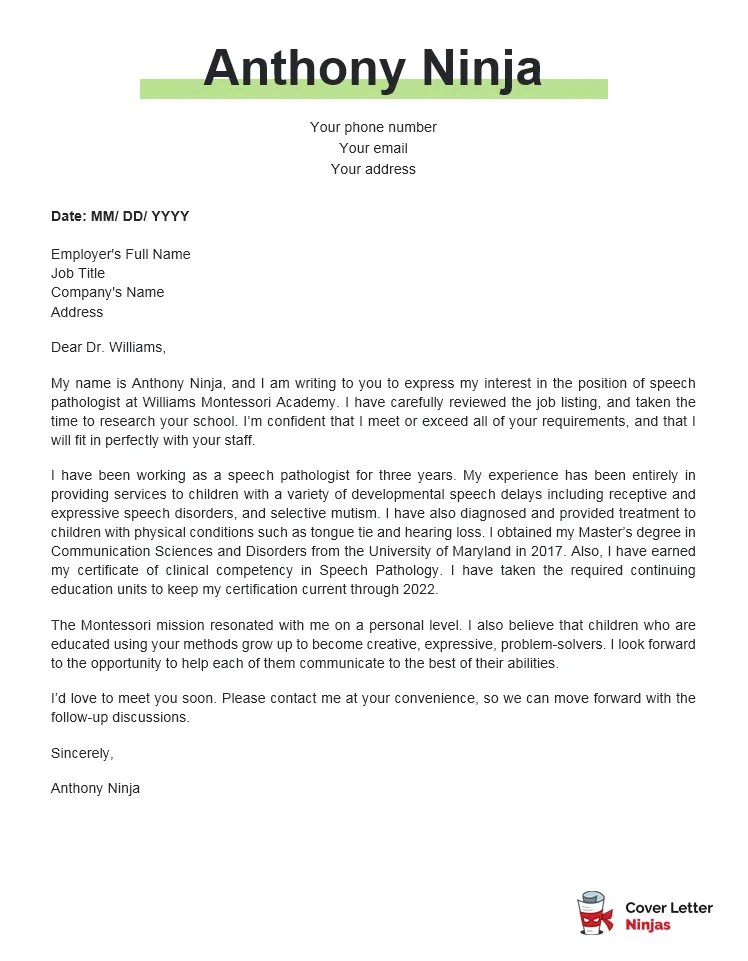
Select a professional, easy-to-read font like Times New Roman, Arial, or Calibri. Use a font size between 10 and 12 points for the body of the letter and a slightly larger size for your name and contact information. This ensures your letter is legible and visually appealing.
Keeping it Concise and Easy to Read
Aim for one page, or at most, one and a half pages. Use clear and concise language, avoiding jargon that the hiring manager might not understand. Break up large blocks of text with bullet points and white space for readability. Make sure each paragraph has a clear focus and contributes directly to the overall message.
Proofreading and Editing Your Cover Letter
Proofread your cover letter carefully for any typos, grammatical errors, and inconsistencies. Errors can damage your credibility and give the impression that you lack attention to detail. Read the letter aloud to catch any awkward phrasing. Consider having a trusted friend or colleague review your letter as a fresh pair of eyes can often identify errors you might miss.
Addressing the Hiring Manager Directly

Whenever possible, address the hiring manager by name. This personal touch demonstrates your initiative and shows that you have taken the time to research the organization. If you cannot find the name, use a professional greeting such as ‘Dear Hiring Manager’ rather than a generic greeting. This shows respect and a professional approach.
Essential Elements to Include in Your SLP Cover Letter
A strong cover letter has several essential elements that work together to present you as a qualified candidate.
Opening Paragraph: Grabbing Attention
Your opening paragraph is your first opportunity to grab the hiring manager’s attention. State the position you are applying for and briefly highlight why you are a good fit. Show enthusiasm and a clear understanding of the role. Consider mentioning something that excites you about the opportunity or the organization, showing your genuine interest.
Body Paragraphs: Demonstrating Your Value

The body paragraphs are where you showcase your skills and experience. Provide specific examples of your accomplishments, using the STAR method (Situation, Task, Action, Result) to explain how you handled a challenge or achieved a positive outcome. Connect your skills to the job requirements and use keywords from the job description to demonstrate your understanding of the role.
Closing Paragraph: Call to Action
Your closing paragraph should reiterate your interest in the position and summarize your key qualifications. Include a call to action, such as requesting an interview or expressing your availability for a phone call. End with a professional closing such as ‘Sincerely’ or ‘Best regards,’ followed by your name and contact information.
Keywords to Include in Your Cover Letter
Incorporating relevant keywords is essential for catching the attention of hiring managers and Applicant Tracking Systems (ATS). Carefully review the job description and identify the most important keywords. Then, integrate them naturally throughout your cover letter.
Identifying Relevant Keywords
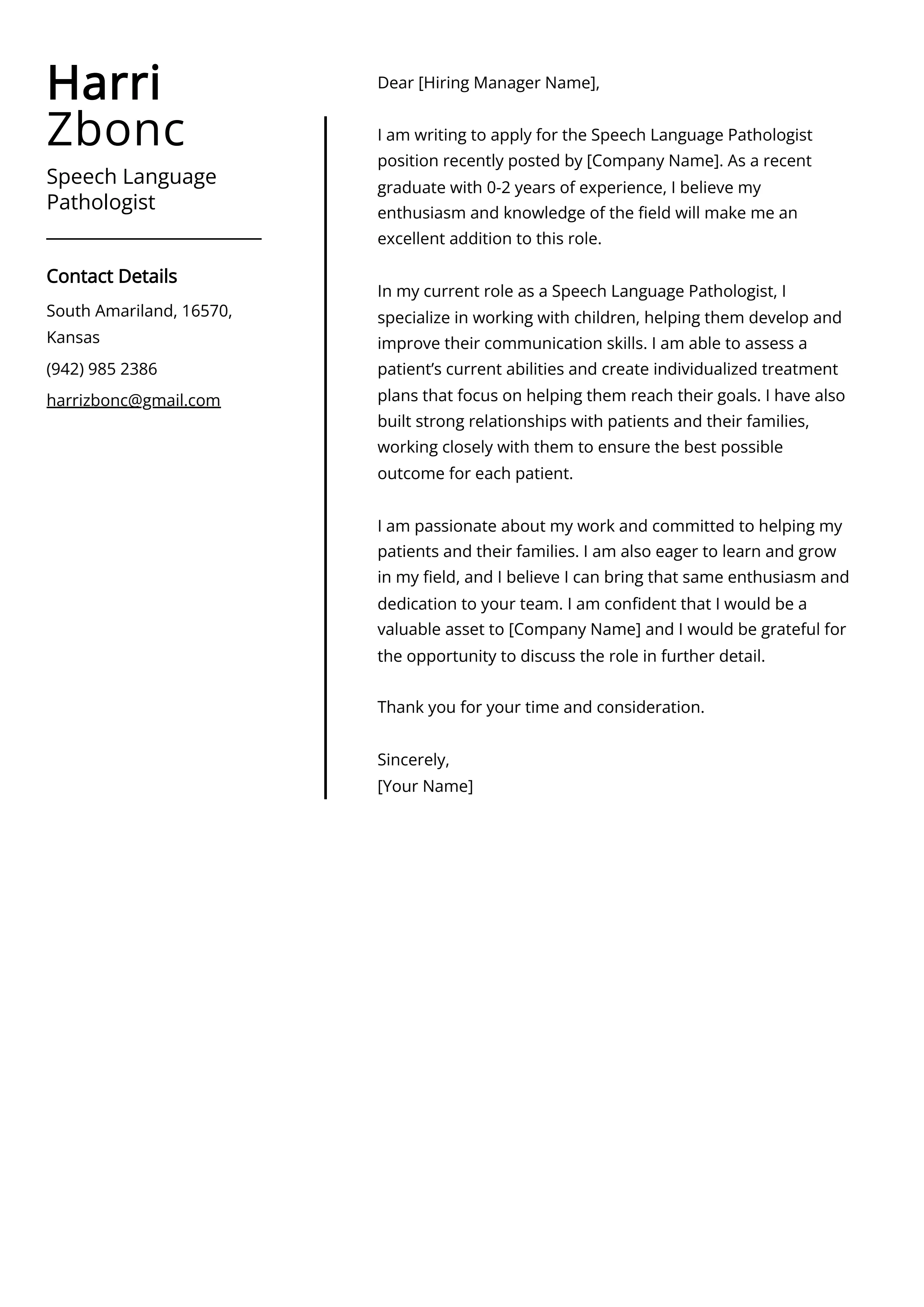
Look for skills, software, and certifications mentioned in the job posting. Examples include ‘dysphagia,’ ‘pediatric speech therapy,’ ‘AAC devices,’ ‘IEP development,’ or specific software programs like ‘EHR systems.’ Create a list of these keywords to use in your letter.
Integrating Keywords Naturally
Don’t stuff your cover letter with keywords. Instead, use them in a way that feels natural and relevant. For example, if the job description mentions experience with AAC devices, you might write, ‘I have extensive experience using AAC devices, including Proloquo2Go and TouchChat, to enhance communication for nonverbal children.’ This demonstrates your skills without sounding forced.
Common Mistakes to Avoid in Your SLP Cover Letter
Certain mistakes can significantly reduce your chances of getting hired. Be mindful of these common pitfalls and avoid them in your cover letter.
Generic Cover Letters
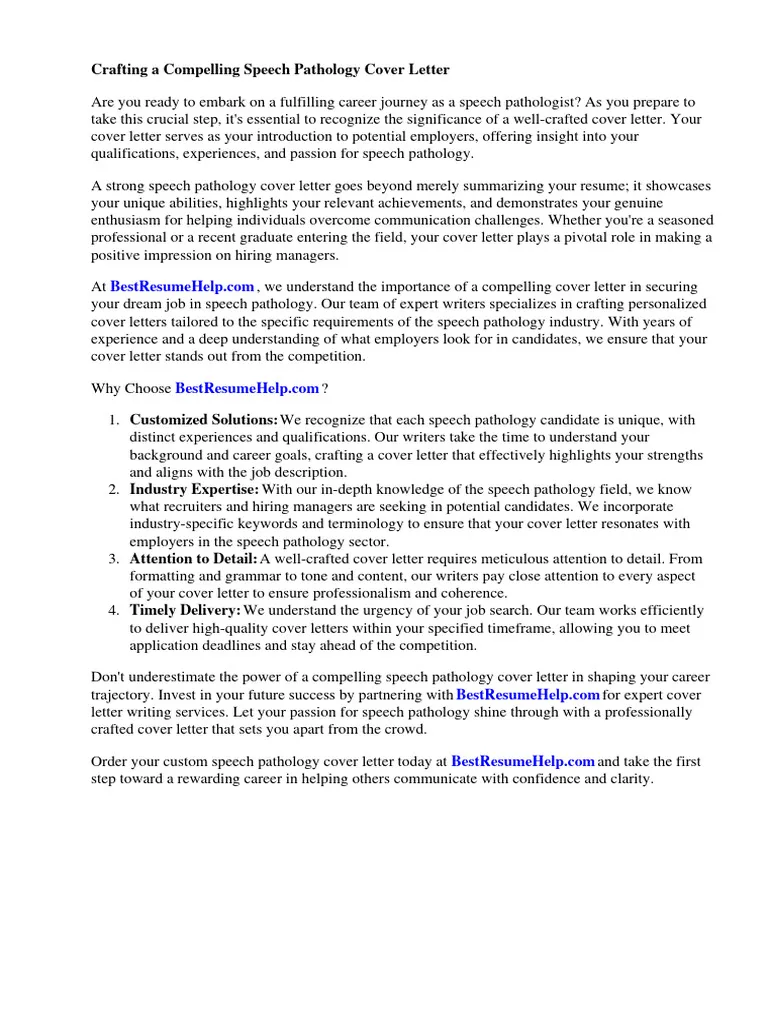
Avoid using a generic cover letter that you send to every job application. Customize your cover letter for each position by tailoring it to the specific requirements and organization. Hiring managers can easily spot generic letters, and they often end up in the reject pile.
Typos and Grammatical Errors
Typos and grammatical errors make a poor impression. They suggest a lack of attention to detail, which is crucial in speech therapy. Always proofread your cover letter carefully and consider having someone else review it. Ensure your writing is clear, concise, and free of errors.
Focusing on What You Want, Not What You Can Offer
While it’s important to express your enthusiasm, focus on what you can offer the employer, rather than solely what you hope to gain. Highlight your skills and experience, demonstrating how you can contribute to the organization’s success. Show that you understand their needs and can provide solutions.
Reviewing Sample SLP Cover Letters
Studying sample SLP cover letters can provide valuable insights and inspiration. Use these samples to understand the best practices and to adapt them to your own situation.
Analyzing Successful Examples
When reviewing samples, pay attention to how the writers showcase their skills, quantify their achievements, and tailor the letter to the specific job. Identify the elements that make the letter effective. Focus on the tone, structure, and language used to make the candidate stand out.
Adapting Samples to Your Situation
Do not copy a sample cover letter word-for-word. Instead, use the samples as a guide to structure your letter and incorporate the best practices. Replace the example skills and experiences with your own, and tailor the content to fit the specific job requirements and your background. Make your cover letter unique to you.
By following these secrets and tips, you can create an SLP cover letter that gets you noticed and lands you an interview. Focus on highlighting your skills, showcasing your achievements, and tailoring your letter to the specific job requirements. Good luck with your job search!
